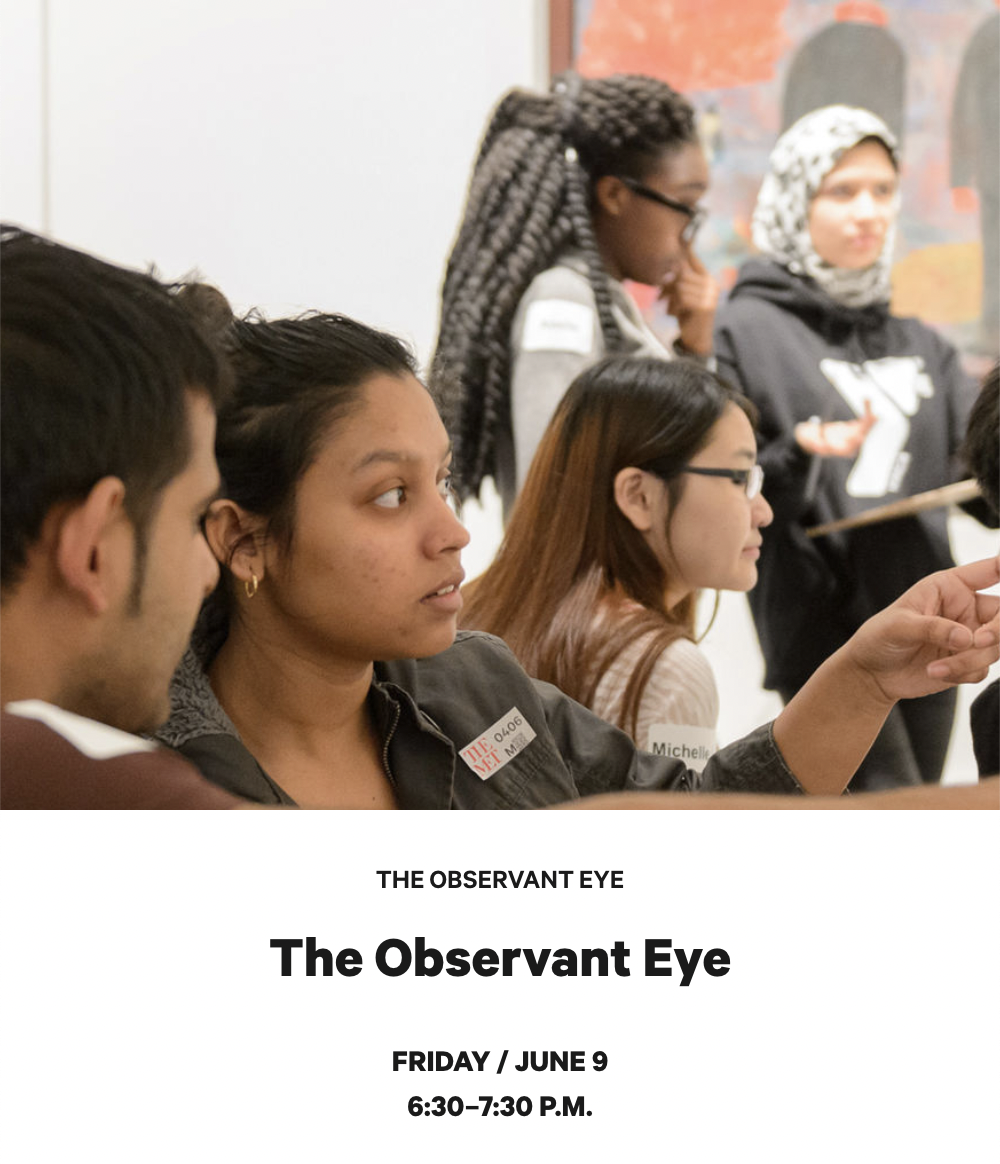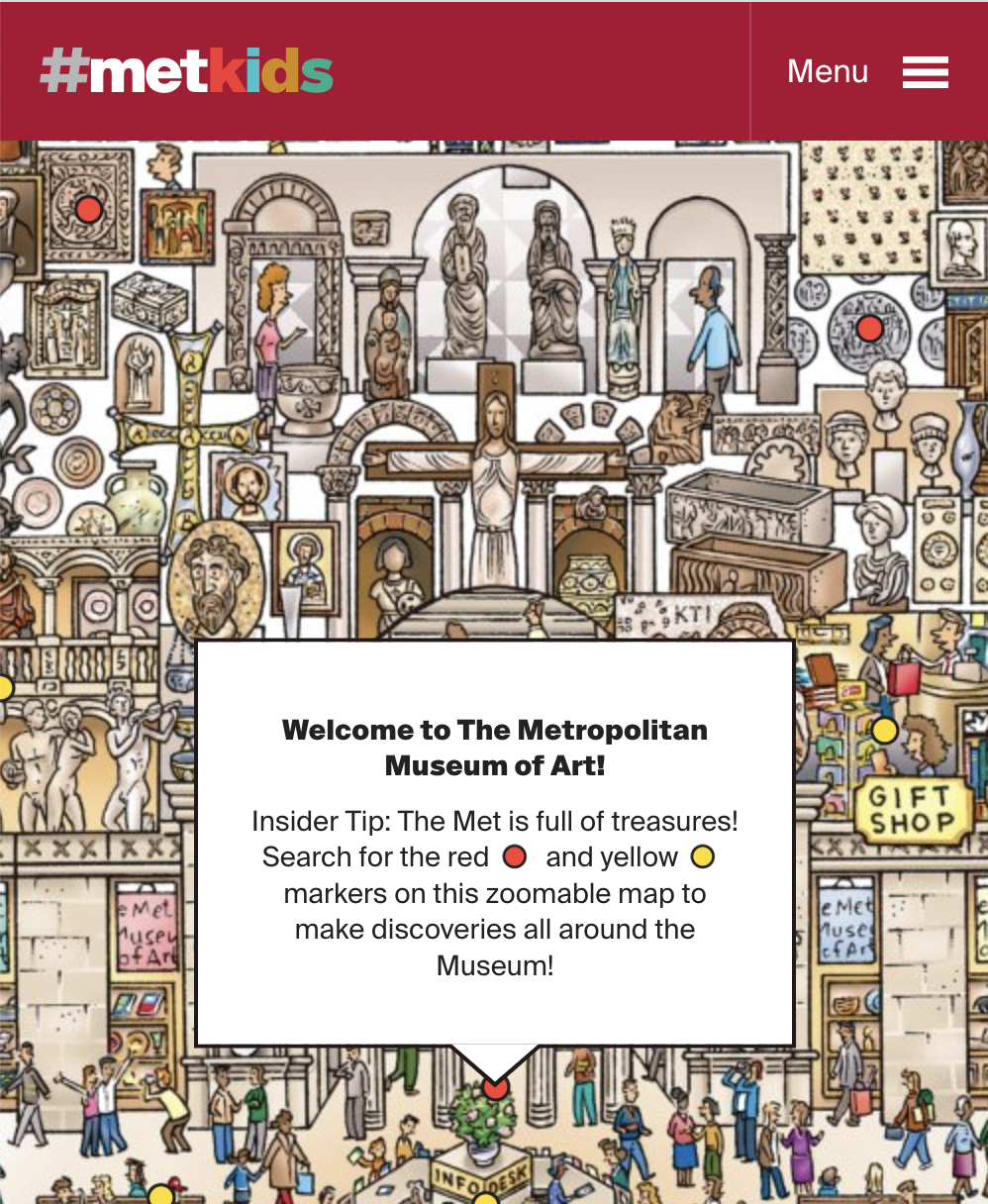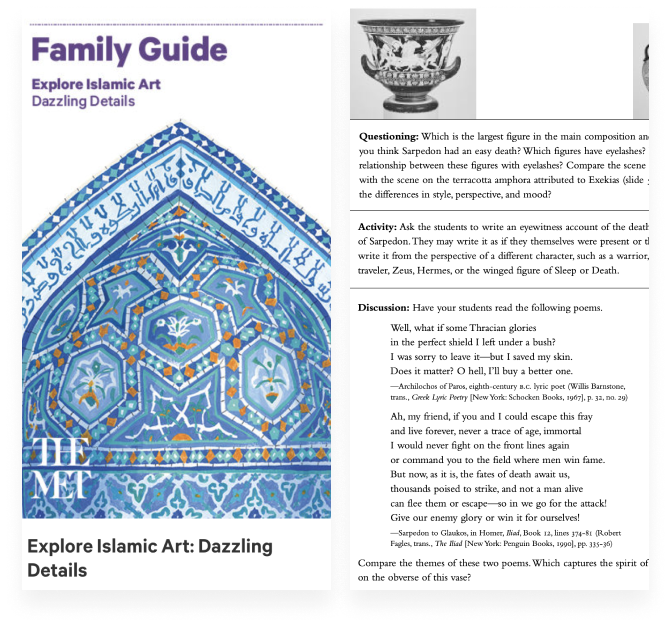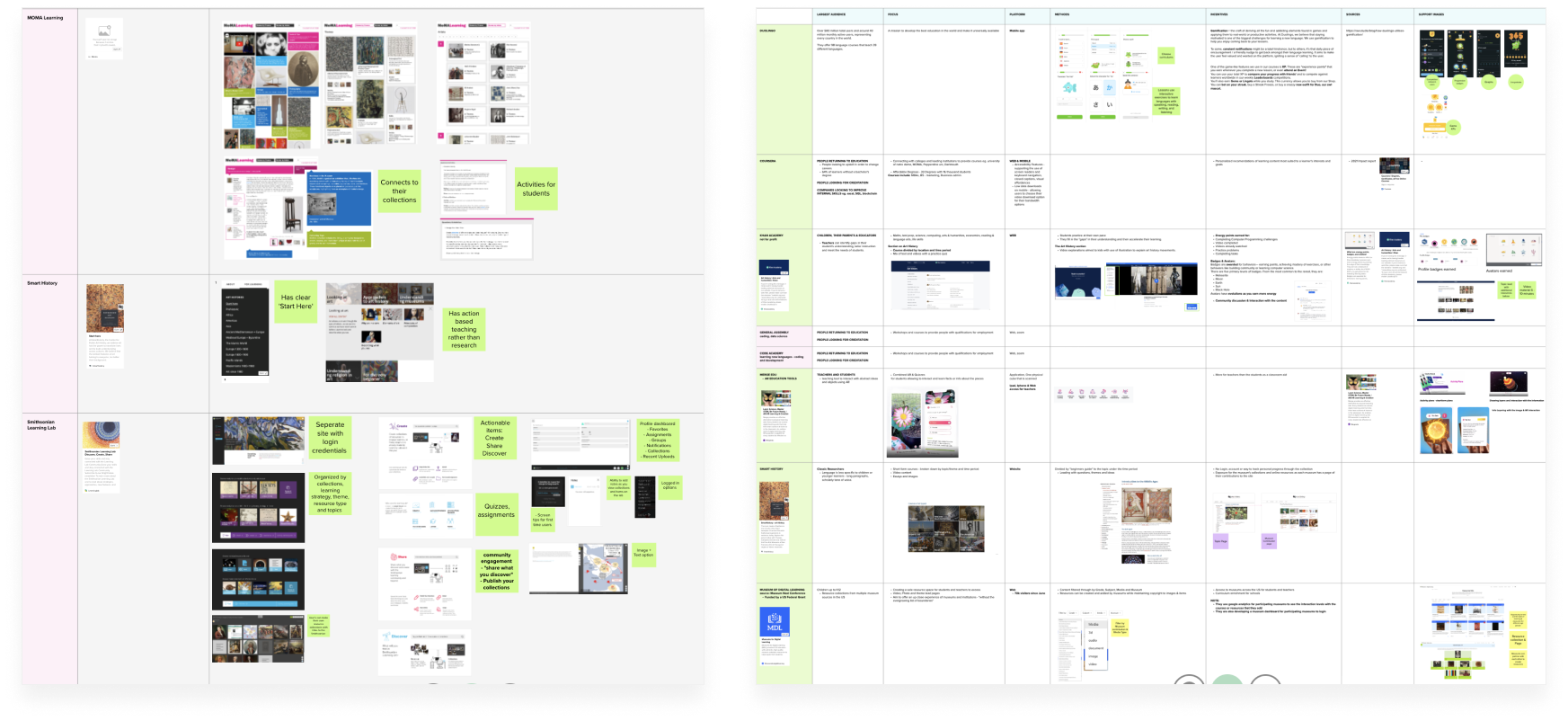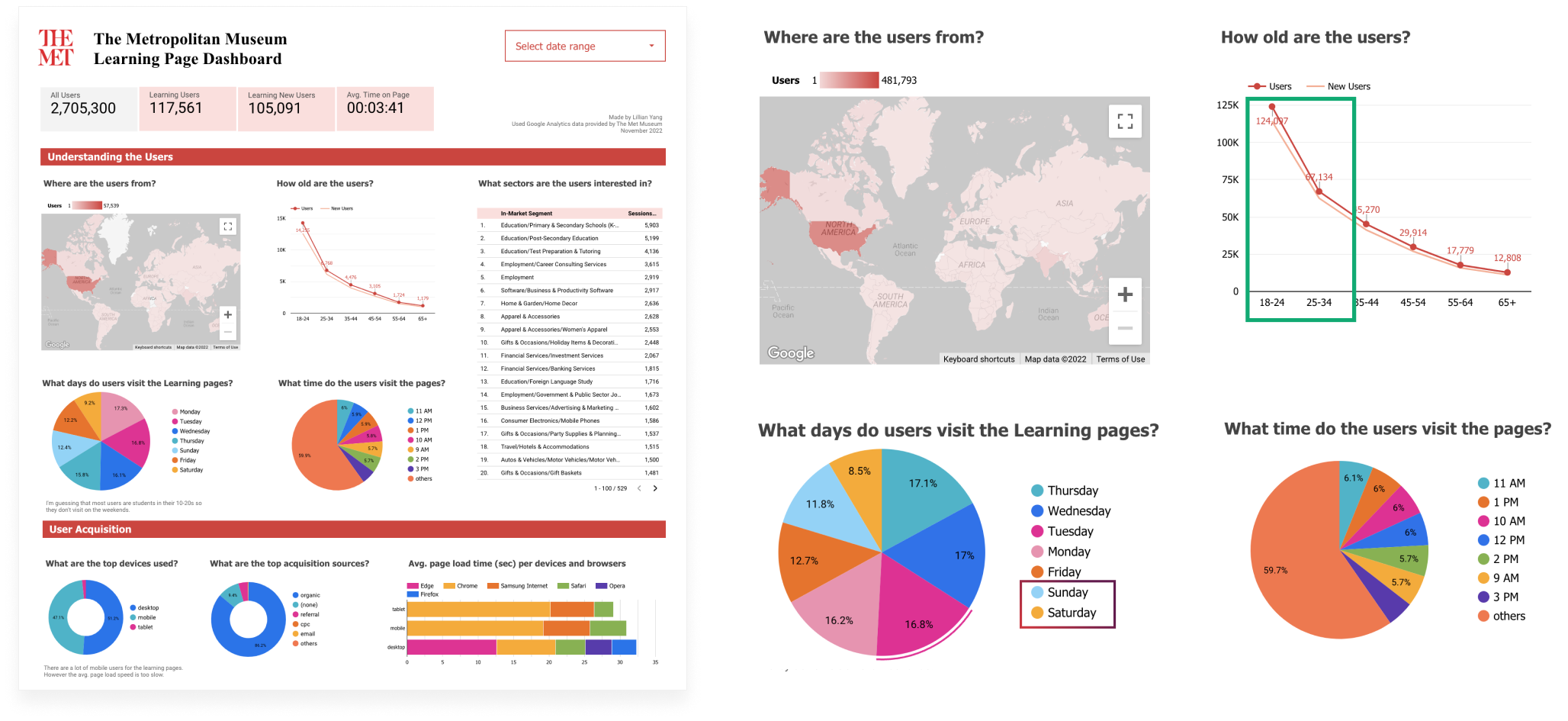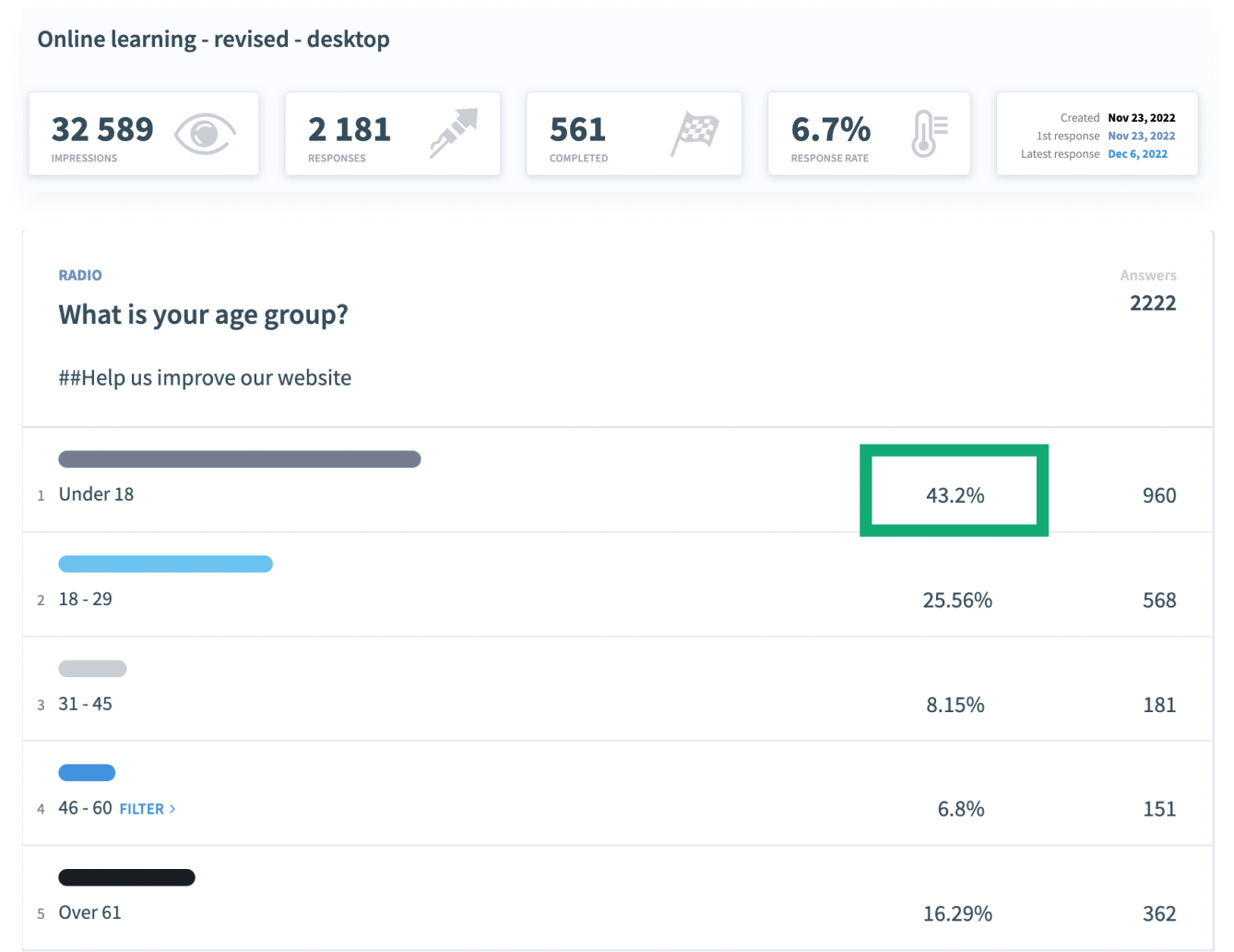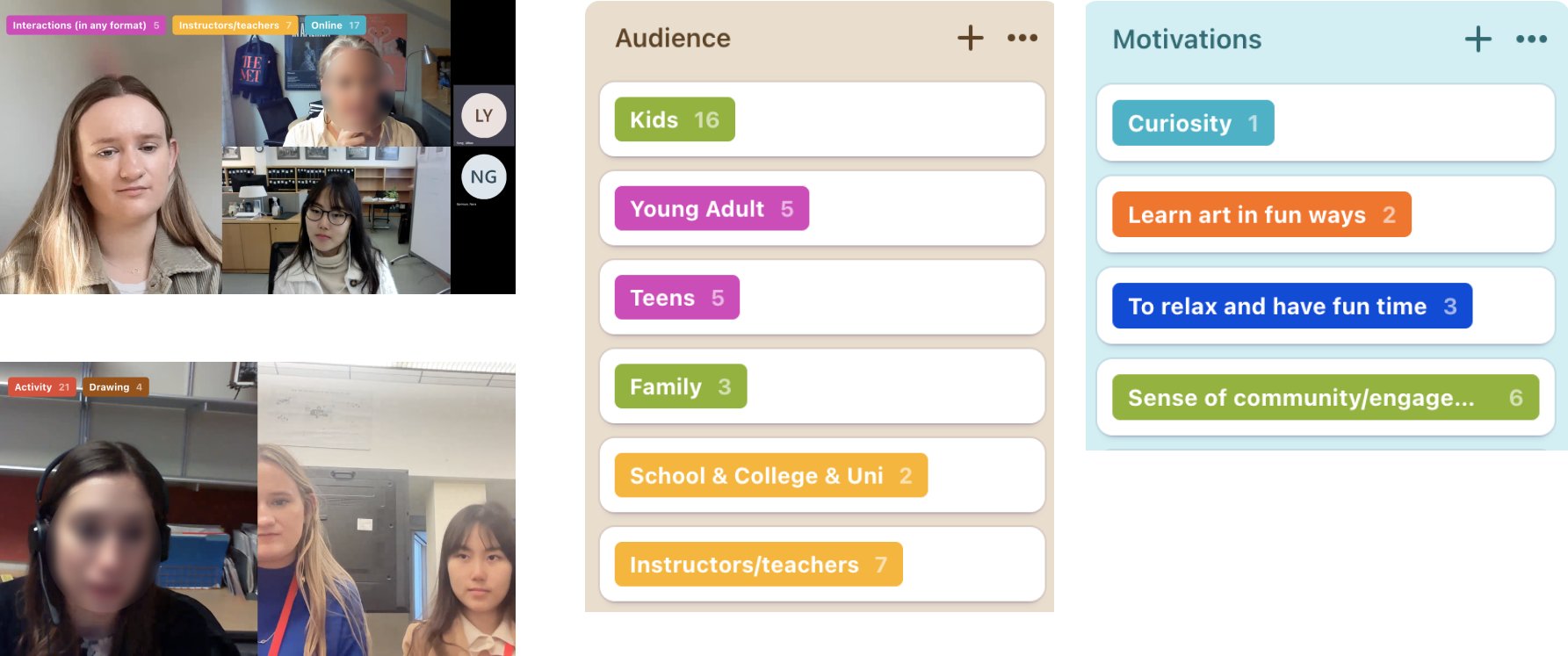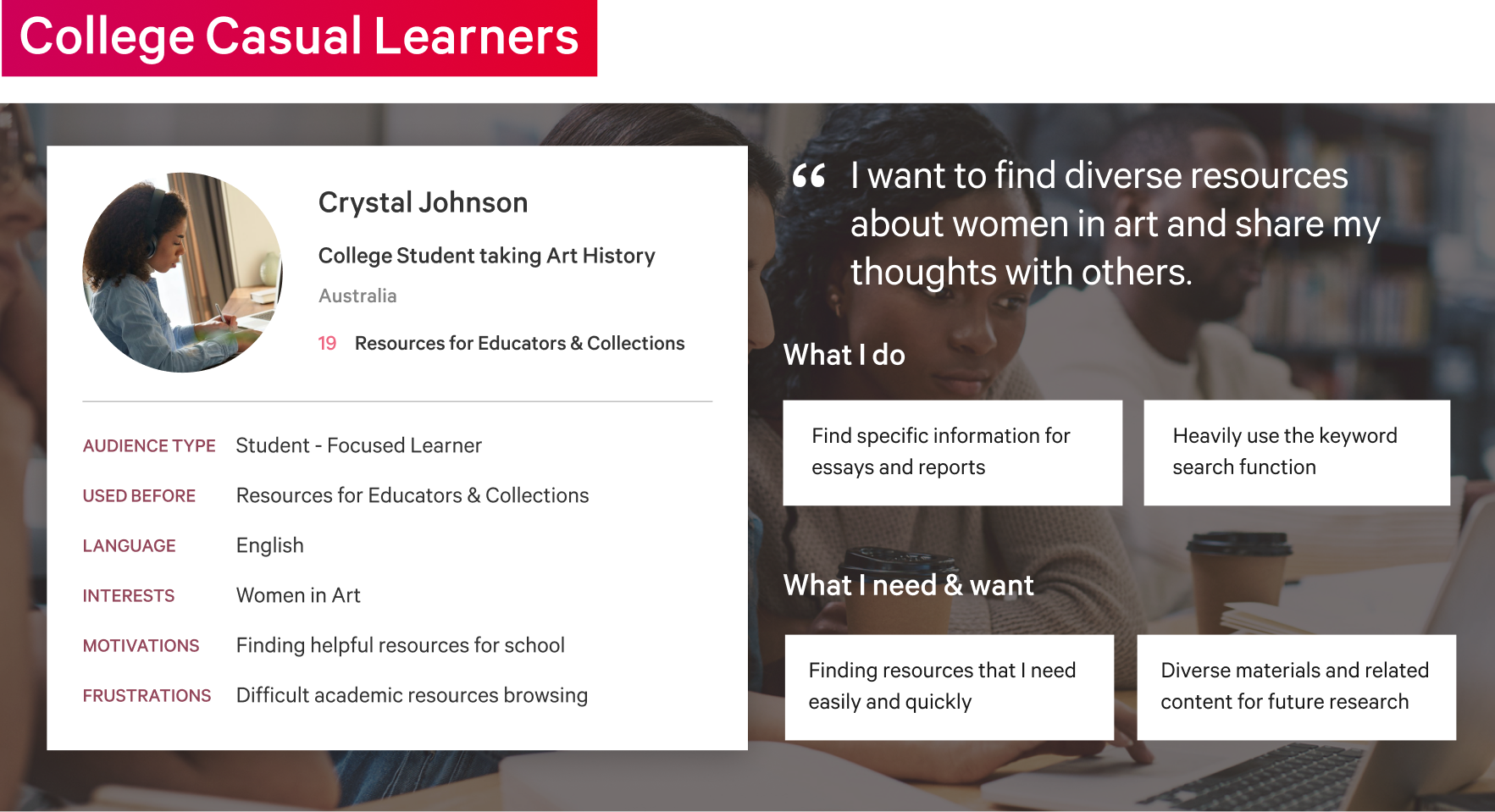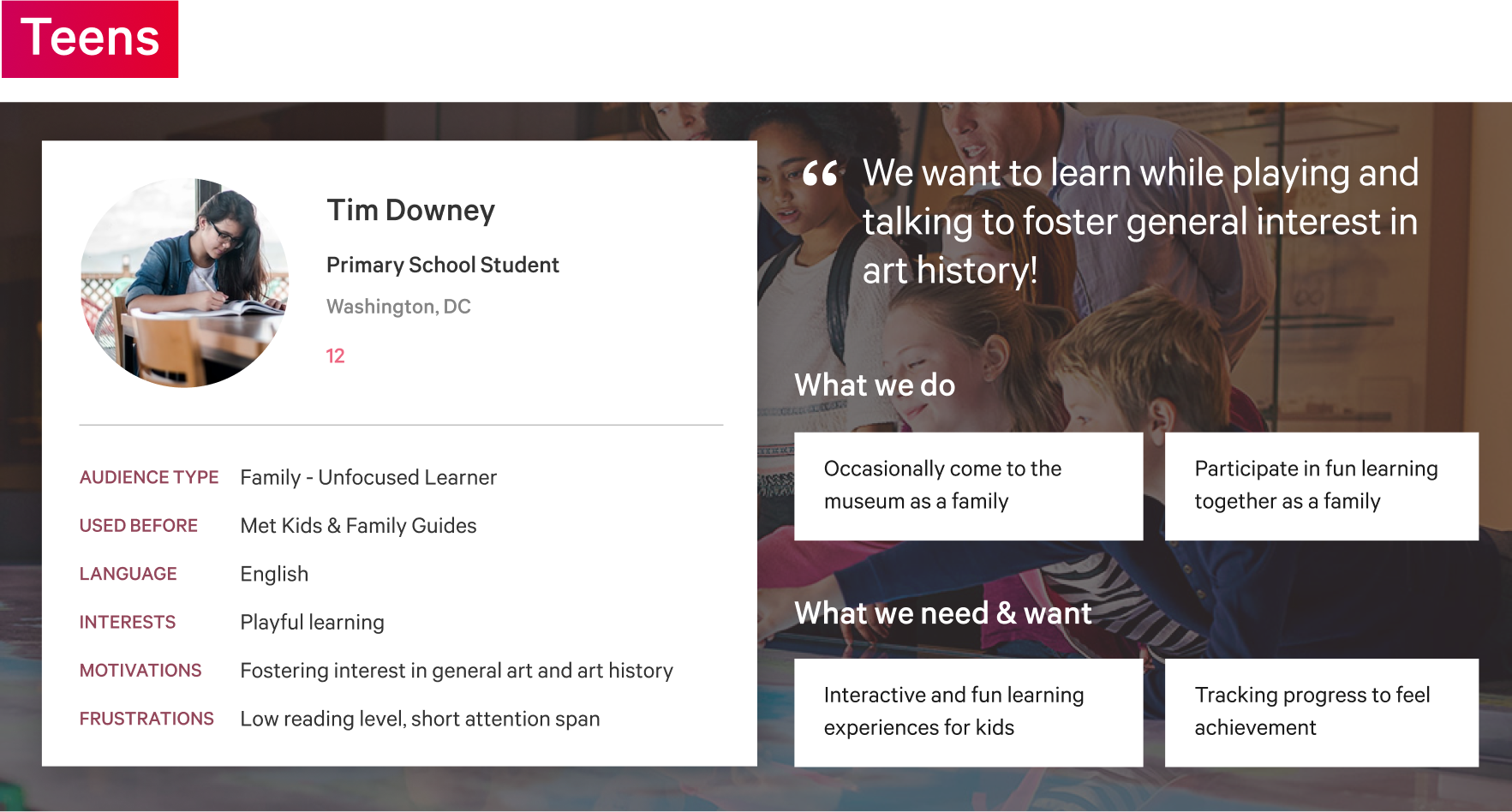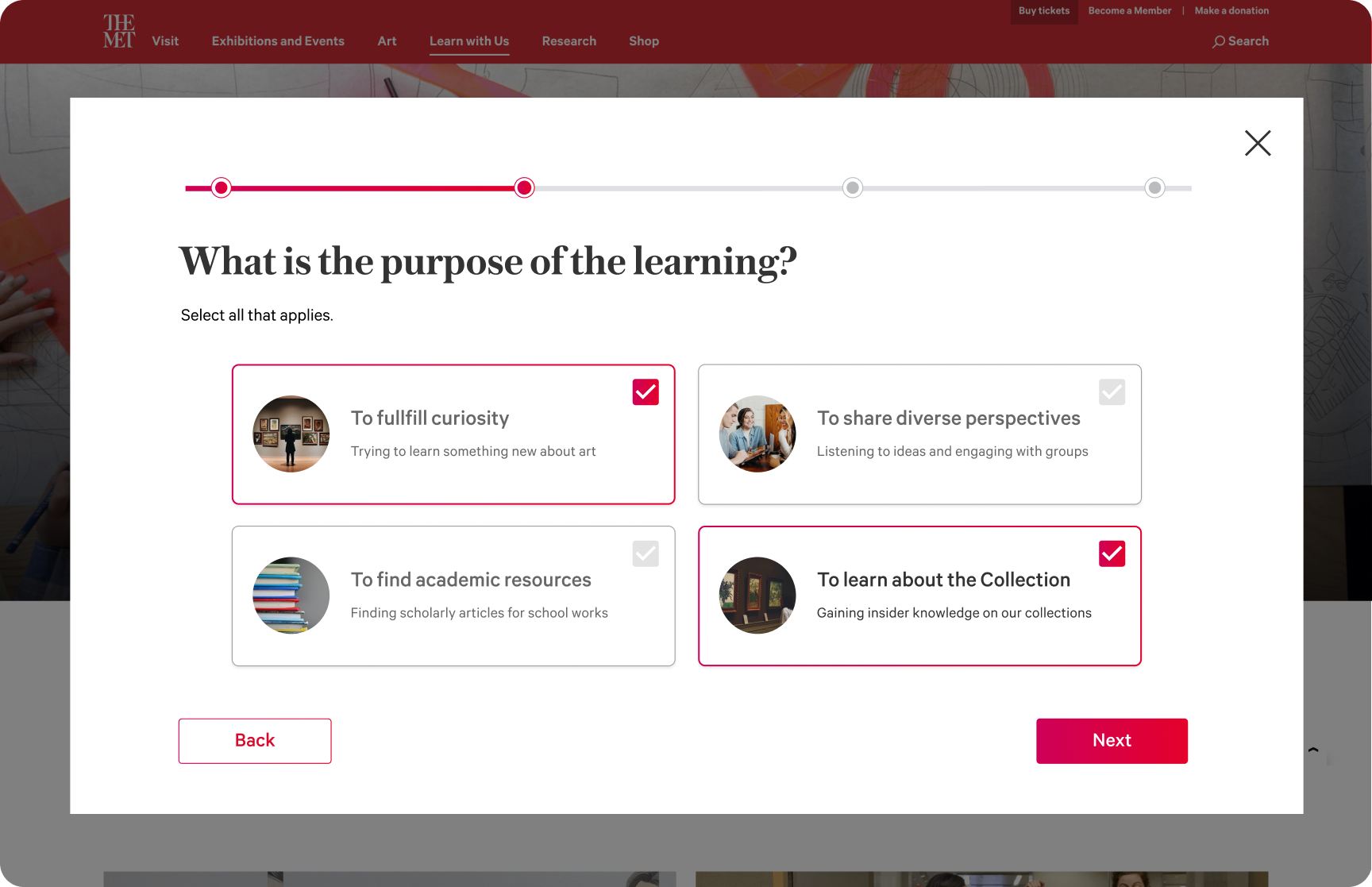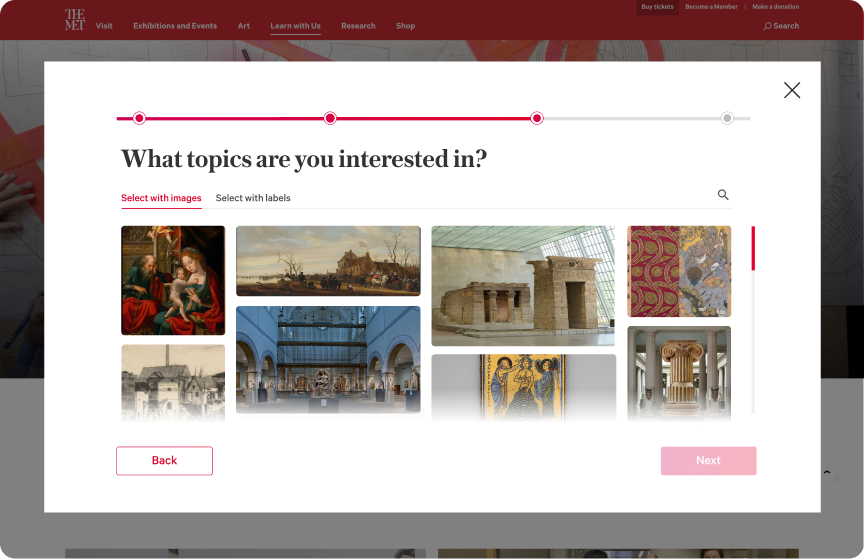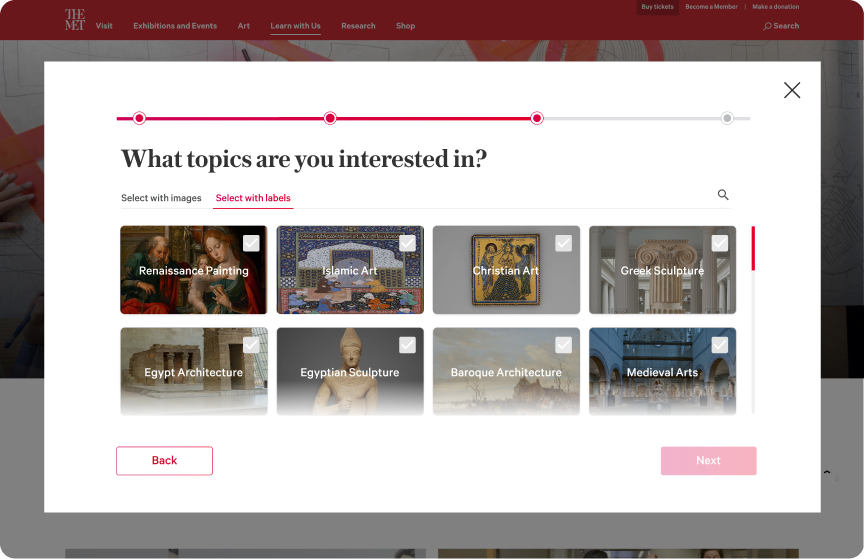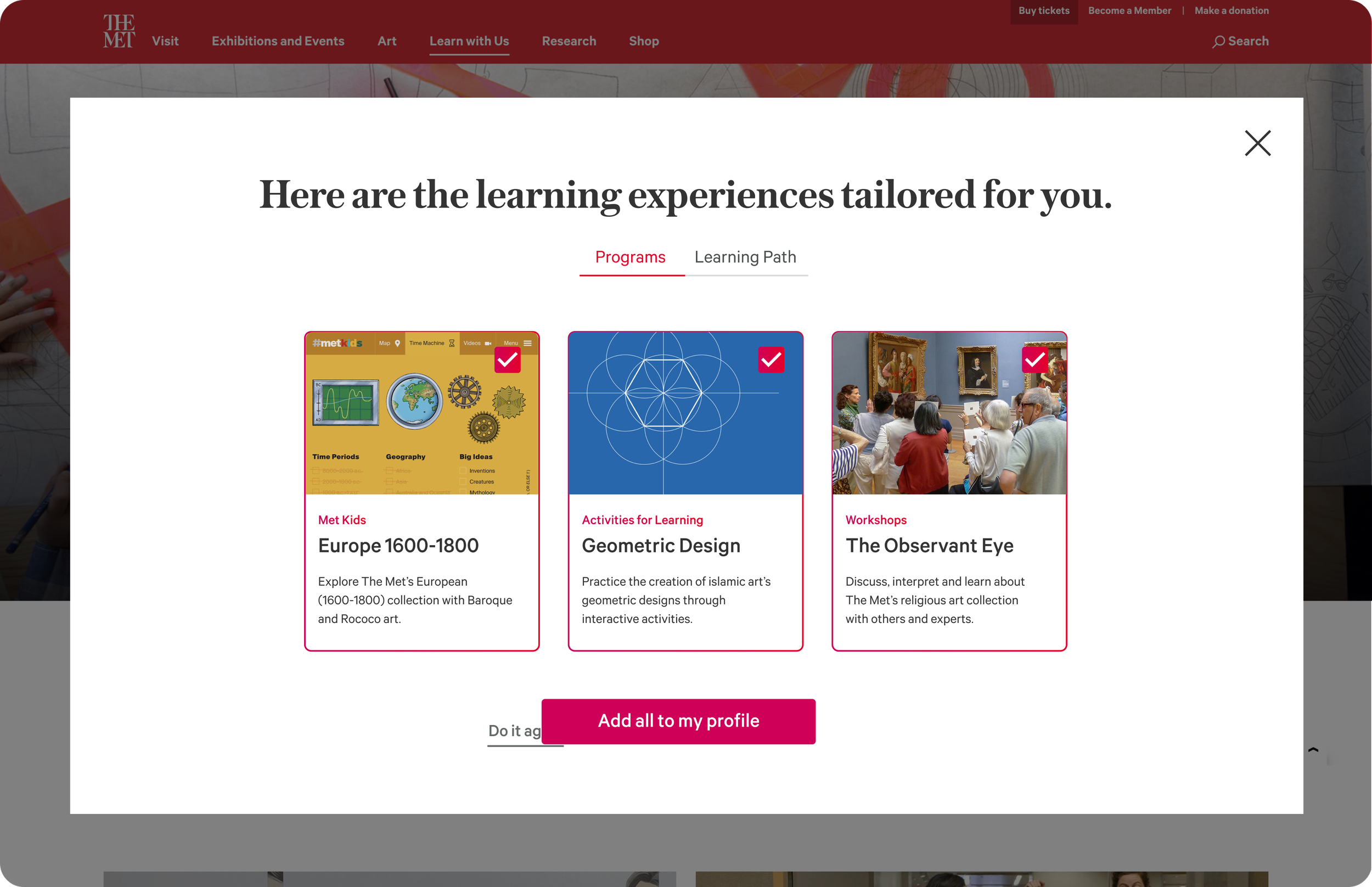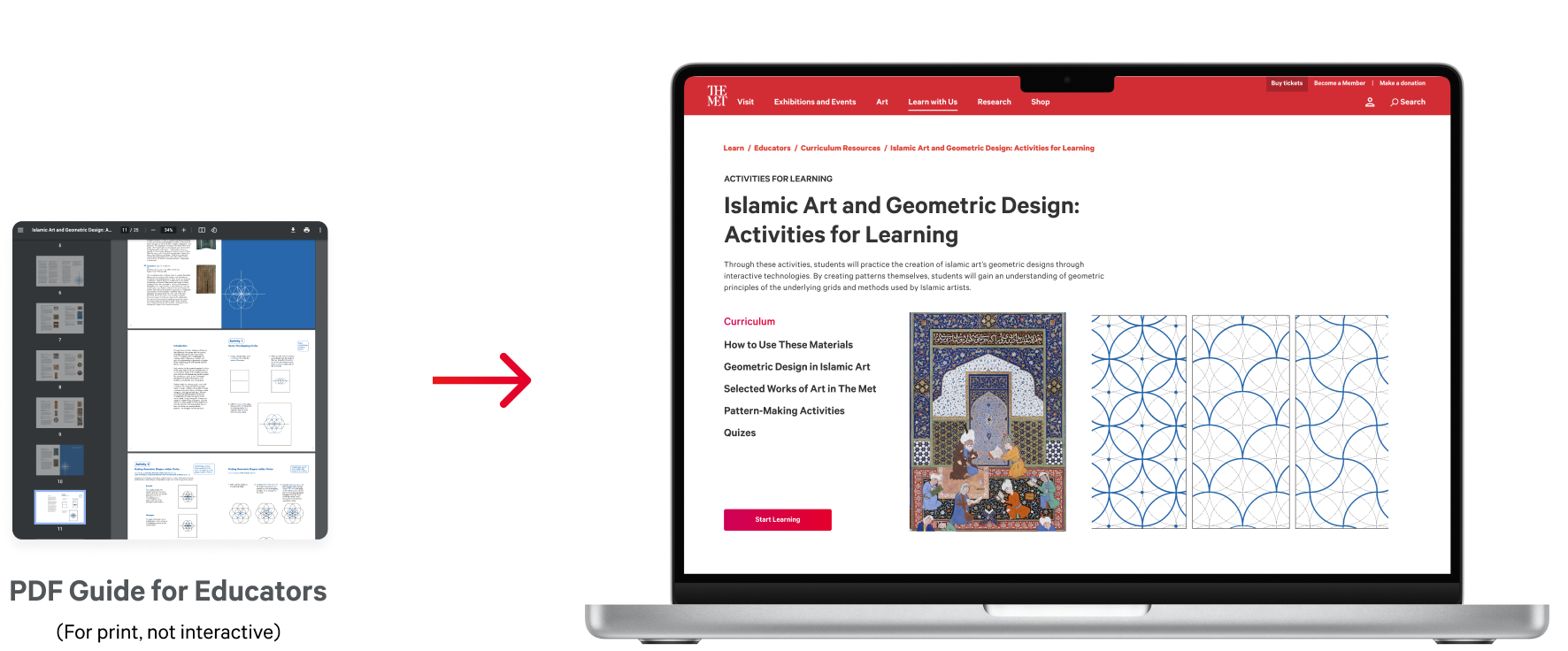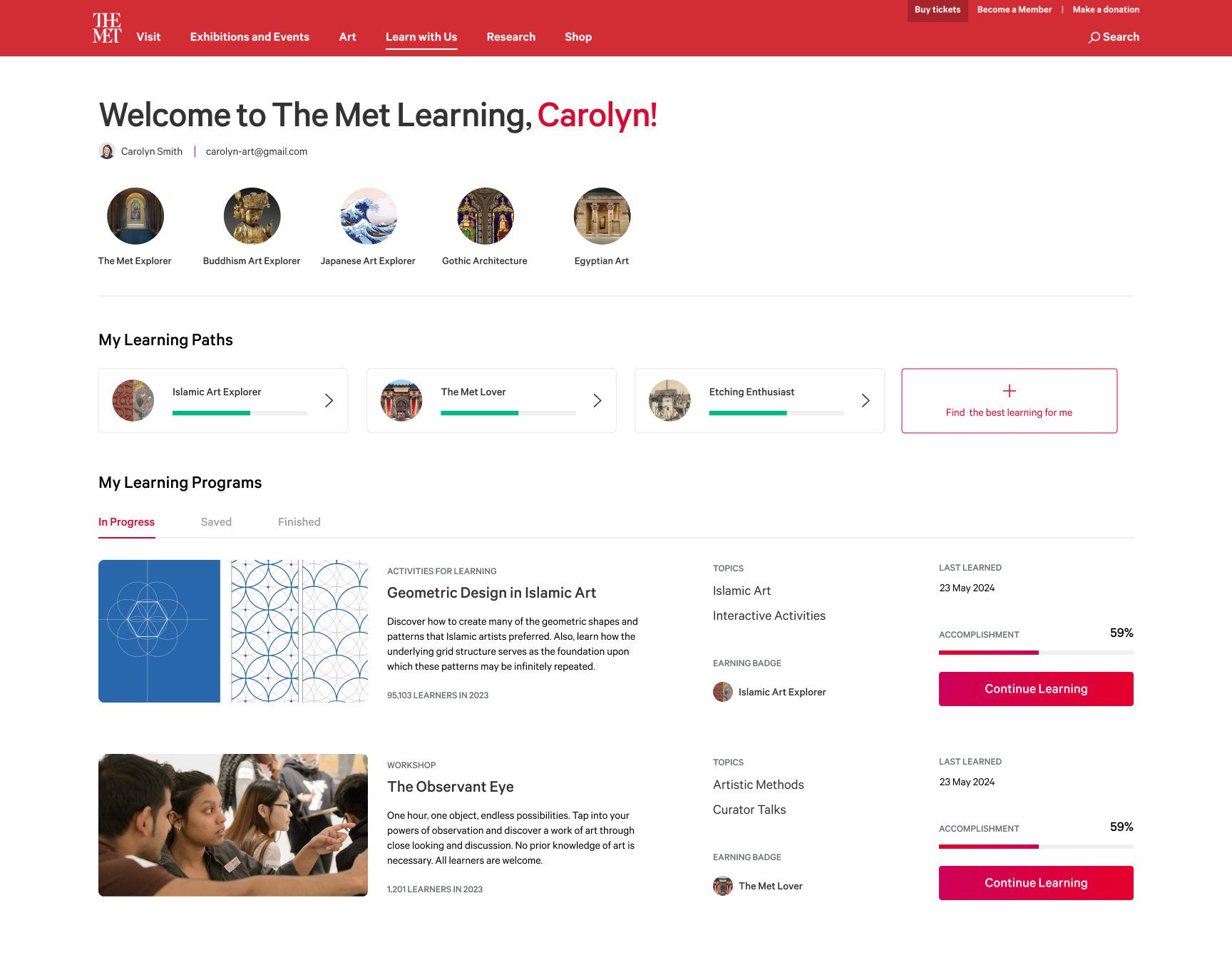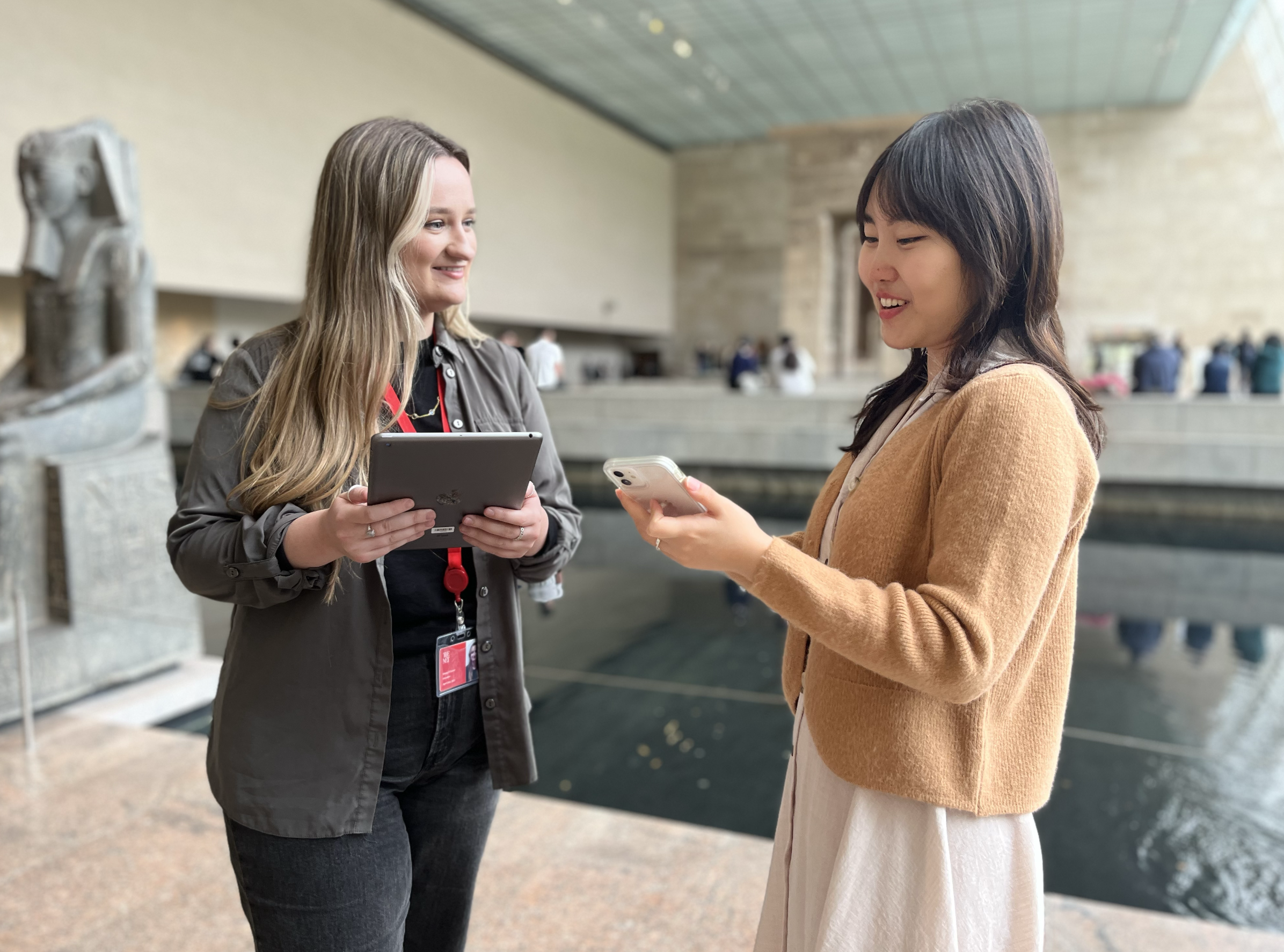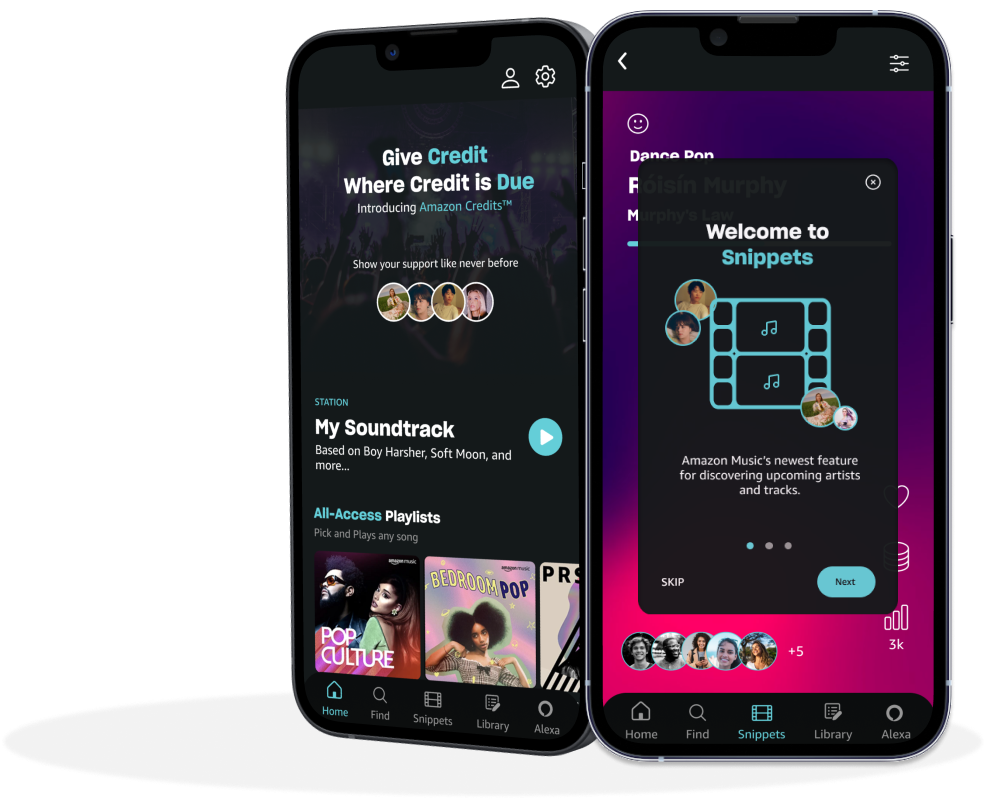
Product Design
UX Research
Ethnography
September - December 2022
My Role:
Product Design Intern
Methods:
Data Analysis
Survey
Stakeholder Interviews
Competitive Analysis
Ideation
Prototyping
Usability Testing
What does the future of online learning experiences look like at The Metropolitan Museum of Art in New York?
The Metropolitan Museum of Art was founded in 1870 with its mission to bring art and art education to the American people and is the largest art museum in the Americas. In 2022 it welcomed 3,208,832 visitors, ranking it eighth in the list of most-visited art museums in the world. I worked on the digital team as a Product Design Intern 2022-23 and focused on the future of digital learning. The Met’s digital collections have 1.5 million works that span 5,000 years of history. My goal was to understand what issues users faced when accessing the collections, what material mediums resonate and how this experience could best serve users who might not ever visit the museum in NYC!
Our Research questions and methods
Who are our learners?
Google Analytics
Stakeholder interviews
Personas
What/how do they want to learn?
User surveys
Competitive analysis
The Brief
“Research, identify and design a solution to the future of The Met’s online learning landscape”
Where can we incorporate this new experience?
Stakeholder interviews
Product audit
01
What learning resources do we have at The Met?
In person workshops
Curriculum Guides for teachers
Competitive Analysis
I completed a competitor analysis of 10 organizations with metrics of focus, incentives, learning methods and their largest audience. From organizations like MOMA, National Museum of Korea, and the Smithsonian Learning Lab, we were able to learn what digital solutions were working for other organizations.
We learned that MoMa uses hands-on activities like ‘Design Your Own Chair’ and the National Museum of Korea uses multiple choice quizzes for fun learning experiences!
Kid’s Materials
What do other museum’s do to support online learning?
I conducted stakeholder interviews with education staff across the museum and analyzed data collected from previous online learners.
User Interviews, Data Analysis
We conducted 30 minute interviews with Met staff across departments including education, accessibility, programming and membership.
They provided incredible insights and more data that was collected from online programming during Covid-19 when all programs were put online.
We utilized Dovetail to analyze collaboratively and complete atomic research. We analyzed thematically and tagged anything of note from the interviews.
Google Looker Studio Dashboard
Survey Responses
Dovetail Analysis Method that the product team at The Met now uses full time.
We learned that the nearly 30% of users found that the content was too scattered on the site and they didn’t know what program was for them.
02
Who are the online learners?
Defining the users
We tracked the user data on Google Analytics of the current ‘Learn with us’ page and created the interactive dashboard using Google Looker Studio.
We learned;
Most users are from the US
Almost 70% are under 35 years old
The time the users visit the pages, it’s mostly before 2pm presumably at School.
From this, we figured out that our online learners can be identified as young ‘students,’ looking for study materials.
We launched an intercept survey on the ‘Learn with Us’ pages using Qualaroo that asked 5 visitors very simple questions about who they were and why they were on the learning pages.
In 2 weeks, we gathered 2,700 responses with a 7% response rate, which is much higher than the product team’s previous surveys!
43 percent of the survey respondents were under 18 which continued to confirm that the learners were in second level education.
03
How do our users like to learn?
Deciding the medium of the product
When program participants were asked ‘What are your most favorite methods to learn about the Museum?’ The top 3 answers were : Conversation and critical thinking, engagement with museum professionals, and interactive digital activities.
Throughout our stakeholder interviews we found that educational expertise suggested creative activities, multi-sensory and interpretive activities were great methods of learning.
04
Making sure The Met’s users find the content they’re interested in
Our Product concept
Learn with Us: Onboarding wizard and Profile
Our solution to engage online learners was an onboarding wizard which allowed the visitor to select their;
Learning level
Purpose of learning
Topics of interest
How they like to learn (visually, activities etc.)
in order to highlight a set of programs suited to their interests and goals. The programs could be selected across a variety of areas and allowed the content to be presented to the visitor rather than searching.
Uses simple language and images
We decided to let users select what they’re interested in visually rather than needing to know the terms or names of pieces. The barrier to learning about art history can sometimes be
not knowing what pieces to start with.
Uses a mix of audience based content and different learning styles
We found that kids content appealed to adults and interactive resources were enjoyed by all learners with varying levels of art history knowledge. No two people learn the same way so providing an option for the user to identify their preferred method was key.
Cost Effective: Utilizes existing materials
The Met has a wealth of materials so reusing and optimizing print materials is a great way to reintroduce the museum’s audience to collections.
Allows learners to track their progress across The Met’s Collections
We identified that progress tracking and visualizing progress way a key component of online learning products. As users would select a variety of programs they would be inclined to return to the activities to gain recognition for their learning.
AND/OR
What did stakeholders think?
Curators, Designers, Product Managers, Chief Technology Officer and team members from all across the museum attended our presentation in December 2022. It was an incredible opportunity to walk the cross functional teams through our exploration and findings. The response was excited and incredibly positive! We had a great discussion about how this type of wizard could be used across other areas of The Met’s collections and revitalize existing materials.
Personal Reflection
I adored my time working with the digital and product teams during my year at The Met. The variety of projects, content and people you affect with UX research and product design in a museum setting is incredible.
I have become really interested in educational tools and the methods of encouraging different types of learners. Its an industry I would love to explore more!
05
Presenting our findings to 60+ stakeholders across The Met
Presentation
Thank you for looking through my work!
More projects are right here >>

